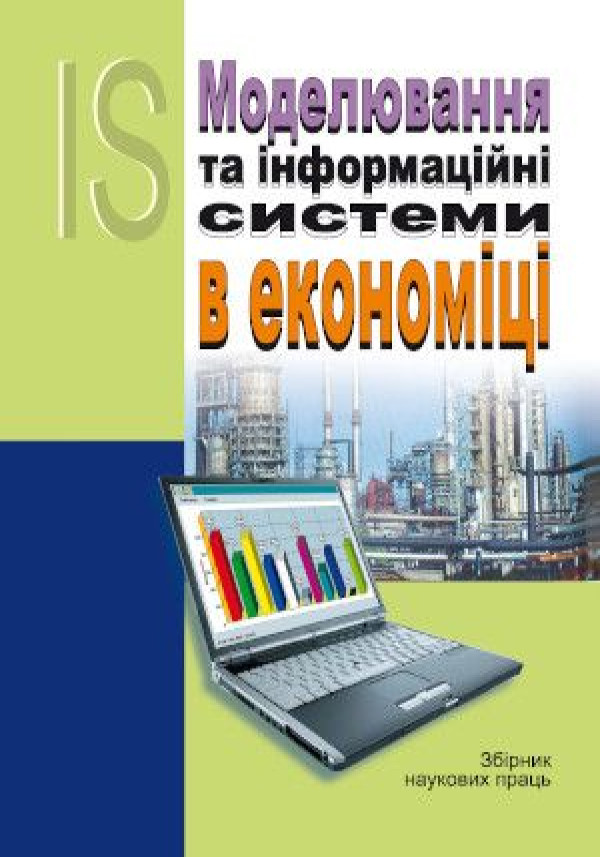
Modeling and Information System in Economics
Методи оптимізації гіперпараметрів у машинному навчанні
Hyperparameter optimization methods in machine learning
10.33111/mise.104.12
 # 104 / 2024
# 104 / 2024
1. Kohavi, R., John, G.: Automatic Parameter Selection by Minimizing Estimated Error. In: Prieditis, A., Russell, S. (eds.) Proceedings of the Twelfth International Conference on Machine Learning, pp. 304–312. Morgan Kaufmann Publishers (1995).
2. Escalante, H., Montes, M., Sucar, E.: Particle Swarm Model Selection. Journal of Machine Learning Research 10, 405–440 (2009).
3. Mantovani, R., Horvath, T., Cerri, R., Vanschoren, J., Carvalho, A.: Hyper-Parameter Tuning of a Decision Tree Induction Algorithm. In: 2016 5th Brazilian Conference on Intelligent Systems (BRACIS). pp. 37–42. IEEE Computer Society Press (2016). 142
4. Olson, R., La Cava, W., Mustahsan, Z., Varik, A., Moore, J.: Data driven advice for applying machine learning to bioinformatics problems. In: Proceedings of the Pacific Symposium in Biocomputing 2018. pp. 192–203 (2018).
5. Sanders, S., Giraud-Carrier, C.: Informing the Use of Hyperparameter Optimization Through Metalearning. In: Gottumukkala, R., Ning, X., Dong, G., Raghavan, V., Aluru, S., Karypis, G., Miele, L., Wu, X. (eds.) 2017 IEEE International Conference on Big Data (Big Data). IEEE Computer Society Press (2017).
6. Thornton, C., Hutter, F., Hoos, H., Leyton-Brown, K.: Auto-WEKA: combined selection and hyperparameter optimization of classification algorithms. In: Dhillon, I., Koren, Y., Ghani, R., Senator, T., Bradley, P., Parekh, R., He, J., Grossman, R., Uthurusamy, R. (eds.) The 19th ACM SIGKDD International Conference on Knowledge Discovery and Data Mining (KDDʼ13). pp. 847– 855. ACM Press (2013).
7. Bergstra, J., Bengio, Y.: Random search for hyper-parameter optimization. Journal of Machine Learning Research 13, 281–305 (2012).
8. Rasmussen, C., Williams, C.: Gaussian Processes for Machine Learning. The MIT Press (2006).
9. Balcan, M., Weinberger, K. (eds.): Proceedings of the 33rd International Conference on Machine Learning (ICMLʼ17), vol. 48. Proceedings of Machine Learning Research (2016).
10. Srinivas, N., Krause, A., Kakade, S. M., & Seeger, M. W. (2012). Information-theoretic regret bounds for Gaussian process optimization in the bandit setting. IEEE Transactions on Information Theory, 58(5), 3250-3265.
11. Simon, D.: Evolutionary optimization algorithms. John Wiley & Sons (2013).
12. Kohavi, R., John, G.: Automatic Parameter Selection by Minimizing Estimated Error. In: Prieditis, A., Russell, S. (eds.) Proceedings of the Twelfth International Conference on Machine Learning, pp. 304–312. Morgan Kaufmann Publishers (1995).
13. Provost, F., Jensen, D., Oates, T.: Efficient progressive sampling. In: Fayyad, U., Chaudhuri, S., Madigan, D. (eds.) The 5th ACM SIGKDD International Conference on Knowledge Discovery and Data Mining (KDDʼ99). pp. 23–32. ACM Press (1999).
14. Li, L., Jamieson, K., DeSalvo, G., Rostamizadeh, A., Talwalkar, A.: Hyperband: A novel bandit-based approach to hyperparameter optimization. Journal of Machine Learning Research 18(185), 1–52 (2018).
15. Russakovsky, O., Deng, J., Su, H., Krause, J., Satheesh, S., Ma, S., Huang, Z., Karpathy, A., Khosla, A., Bernstein, M., Berg, A., Fei-Fei, L.: Imagenet large scale visual recognition challenge. International Journal of Computer Vision 115(3), 211–252 (2015).

